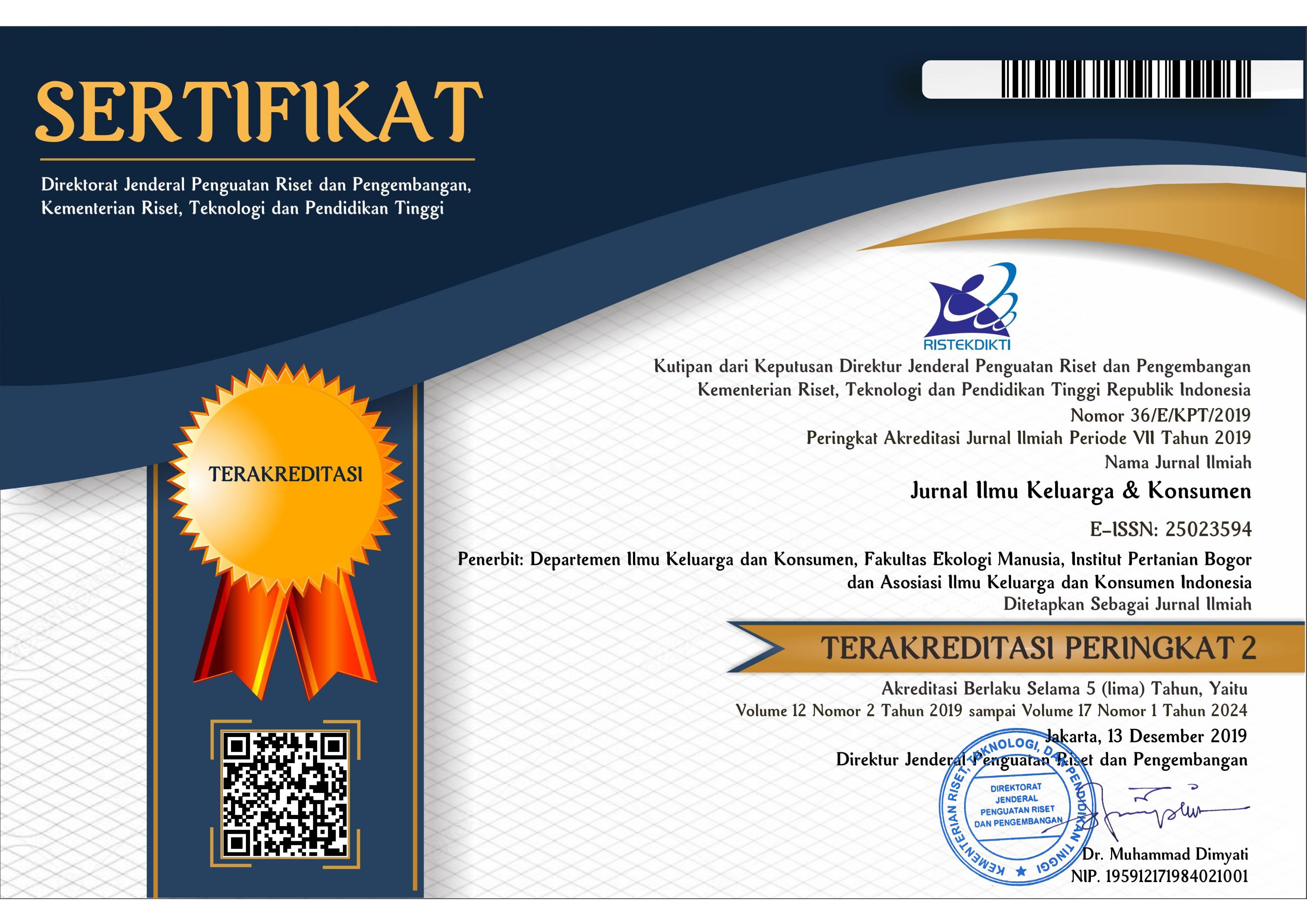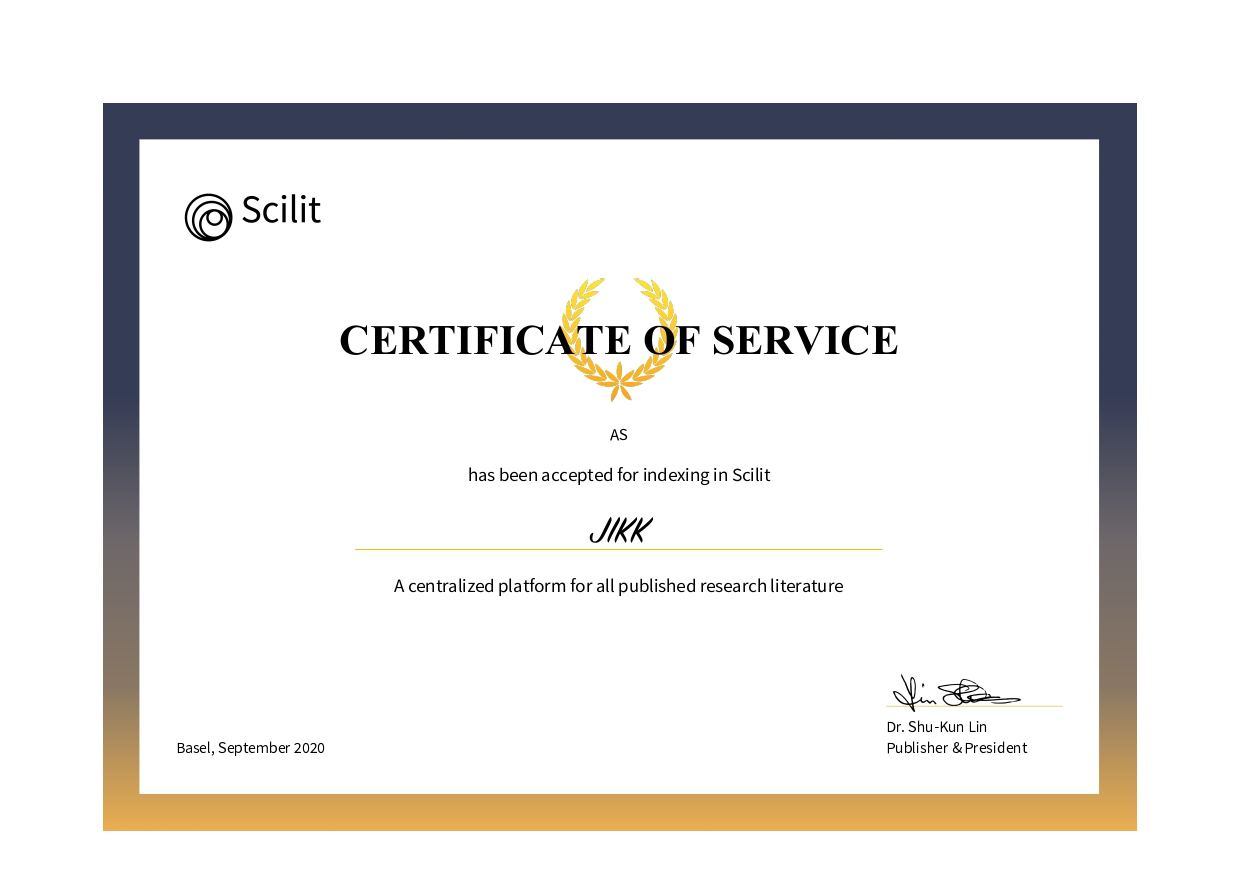CONSUMER PURCHASING BEHAVIOR OF ONLINE FOOD DELIVERY (OFD) APPLICATION USER
Perilaku Pembelian Konsumen Pengguna Aplikasi Online Food Delivery (OFD)
Abstract
The high demand for food access with applications creates competition between food delivery companies. The purpose of this research is to identify and to analyze promotion differences, price value, social influence, perceived usefulness, ease of use, customer experience, restaurant search, choice of food variants, consumer buying behavior, and continuous purchase intention. The research was conducted on consumers who used Gofood, Grabfood, and Shopeefood applications at least once in the last three months, with 400 respondents aged over 15 years. Data collection was carried out using an online questionnaire. Analysis was carried out by descriptive analysis, ANOVA and SWOT tests. The results showed that there were differences in the variables of social influence, perceived usefulness, ease of use, restaurant search, food choice variants, consumer buying behavior, and intention to continue with Gofood, Grabfood, and Shopeefood applications. Shopeefood earns a lower average than Grabfood and Gofood. Strategies can be carried out by taking advantage of busy consumers to create dependence on OFD applications by meeting consumer expectations by providing promos.
References
Alalwan, A. A. (2020). Mobile food ordering apps: An empirical study of the factors affecting customer e-satisfaction and continued intention to reuse. International Journal of Information Management, 50, 28–44. https://doi.org/10.1016/j.ijinfomgt.2019.04.008
Chang, Y. P., & Zhu, D. H. (2012). The role of perceived social capital and flow experience in building users’ continuance intention to social networking sites in China. Computers in Human Behavior, 28(3), 995–1001. https://doi.org/10.1016/j.chb.2012.01.001
Cho, M., Bonn, M. A., & Li. (2019). Differences in perceptions about food delivery apps between single-person and multi-person households. International Journal of Hospitality Management, 77, 108–116. https://doi.org/10.1016/j.ijhm.2018.06.019
Fakfare P. (2021). Influence of service attributes of food delivery application on customers’ satisfaction and their behavioural responses: The IPMA approach. International Journal of Gastronomy Food Science, 25. https://doi.org/10.1016/j.ijgfs.2021.100392
Firmansyah, M. A. (2018). Consumer behavior. CV Budi Utama.
Hong, C., Choi, H., Choi, E. K., & Joung, H. W. (2021). Factors affecting customer intention to use online food delivery services before and during the COVID-19 pandemic. Journal of Hospitality and Tourism Management, 48, 509–518. https://doi.org/10.1016/j.jhtm.2021.08.012
Jun K, Yoon B, Lee S, Lee DS. (2022). Factors influencing customer decisions to use online food delivery service during the covid-19 pandemic. Foods, 11(1). https://doi.org/10.3390/foods11010064
Kapoor AP, Vij M. (2018). Technology at the dinner table: Ordering food online through mobile apps. Journal of Retailing and Consumer Services. 43, 342–351. https://doi.org/10.1016/j.jretconser.2018.04.001
Kedah, Z., Ismail Y., Haque, A. K. M. A., & Ahmed, S. (2015). Key success factors of online food ordering services: An empirical study. Malaysian Institute of Management, 50(2), 19–36
Krestyanpol, L. (2023). Simulation Modeling of consumer behavior within the concept of smart consumption. Procedia Compututer Science, 217, 774–783. https://doi.org/10.1016/j.procs.2022.12.274
Kusumarini, R. R. A. P. I., Fariyanti, A., & Tinaprilla, N. (2022) Consumer attitude and satisfaction by online application for ready-to-eat food delivery service in jabodetabek. Jurnal Ilmu Keluarga dan Konsumen, 15(2), 192–204. https://doi.org/10.24156/jikk.2022.15.2.192
Kytö, E., Virtanen, M., & Mustonen, S. (2019). From intention to action: Predicting purchase behavior with consumers’ product expectations and perceptions, and their individual properties. Food Qual Prefer, 75, 1–9. https://doi.org/10.1016/j.foodqual.2019.02.002
Larassita, N., Razati, G., & Sulastri, S. (2019). Apakah perceived usefulness dapat meningkatkan continuance intention? [Can perceived usefulness increase continuance intention?]. Journal of Business Management Education (JBME), 4(1), 13–24. https://doi.org/10.17509/jbme.v4i1.15887
Luo, M., Li, G., & Chen, X. (2021). Competitive location-based mobile coupon targeting strategy. Journal of Retailing and Consumer Services, 58. https://doi.org/10.1016/j.jretconser.2020.102313.
Muangmee, C., Kot, S., Meekaewkunchorn, N., Kassakorn, N., & Khalid, B. (2021). Factors determining the behavioral intention of using food delivery apps during covid-19 pandemic. Journal of Theoretical and Applied Electronic Commerce Research, 16(5), 1297–1310. https://doi.org/10.3390/jtaer16050073
Mudjahidin., Fatika, H. L., Aristio, A. P., & Junaedi, L. (2021). Intention to use buy online-pickup in-store of the coffee shop. Procedia Computer Science, 197, 591–598. https://doi.org/10.1016/j.procs.2021.12.177
Nur, S., & Djafar J. S. (2022). The Impact of Using Online Food Delivery-Based Applications on Culinary Business Income Levels in Makassar City. YUME: Journal of Management, 5(3), 283–294. https://doi.org/10.2568/yum.v5i3.2624
Oly, N. N., Har, L. C., & Cyril, E. U. (2011). Analyzing key determinants of online repurchase intentions. Asia Pacific Journal of Marketing and Logistics, 23(2), 200–221. https://doi.org/10.1108/13555851111120498
Prasetyo, Y. T., Tanto, H., Mariyanto, M., Hanjaya, C., Young, M. N., Persada, S. F., Miraja, B. A., & Redi, A. A. N. P. (2021). Factors affecting customer satisfaction and loyalty in online food delivery service during the COVID-19 pandemic: Its relation with open innovation. Journal of Open Innovation: Technology, Market, and Complexity, 7(1), 1–17. https://doi.org/10.3390/joitmc7010076
Putri, T. T. G. P., & Berlianto, M. P. (2022). Antecedents influencing repurchase intention in food delivery service applications (study on gofood). ULTIMA Management, 14(1), 60-82. https://doi.org/10.31937/manajemen. v14i1.2537
Ramdhani, H. S., Daryanto, a., & Rifin, A. (2015). Satisfaction as a variable between product quality, service quality, and value perception of consumer loyalty in new restaurants. Jurnal Ilmu Keluarga dan Konsumen, 8(2), 115-124. https://doi.org/10.24156/jikk.2015.8.2.115
Ray, A., Dhir, A., Bala, P. K., & Kaur, P. (2019). Why do people use food delivery apps (FDA)? A uses and gratification theory perspective. Journal of Retailing and Consumer Services, 51, 221–230. https://doi.org/10.1016/j.jretconser.2019.05.025
Sinha, A. P., Srivastava, P., Srivastava, S. K., Asthana, A. K., & Nag, A. (2021). Customer Satisfaction and Loyalty for Online Food Services Provider in India: An Empirical Study. International Journal of Customer Relationship Marketing and Management, 13(1), 1–23. https://doi.org/10.4018/IJCRMM.289204
Tenggara Strategics. (2022). OFD research infographic. https://asset.tenggara.id.
Tian, H., Siddik, A. B., & Masukujjaman, M. (2022). Factors affecting the repurchase intention of organic tea among millennial consumers: An empirical study. Behavioral Sciences, 12(2), 50. https://doi.org/10.3390/bs12020050
Troise, C., O’Driscoll, A., Tani, M., & Prisco, A. (2021). Online food delivery services and behavioral intention – a test of an integrated TAM and TPB framework. British Food Journal, 123(2), 664–683. https://doi.org/10.1108/BFJ-05-2020-0418
Verhoef, P. C., Kannan, P. K., & Inman, J. J. (2015). From multi-channel retailing to omni-channel retailing: Introduction to the special issue on multi-channel retailing. Journal of Retailing, 91(2), 174–181. https://doi.org/10.1016/j.jretai.2015.02.005
Wardhani, S., Sumarwan, U., & Yuliati, L. N. (2015). Pengaruh persepsi dan preferensi konsumen terhadap keputusan pembelian hunian green. Jurnal Manajemen dan Organisasi, 6(1), 45–63. https://doi.org/10.29244/jmo.v6i1.12183
Yeo, V. C. S., Goh, S. K., & Rezaei, S. (2017). Consumer experiences, attitude, and behavioral intention toward online food delivery (OFD) services. Journal of Retailing and Consumer Services, 35, 150–162. https://doi.org/10.1016/j.jretconser.2016.12.013
Zhao, H., Yao, X., Liu, Z., & Yang, Q. (2021). Impact of pricing and product information on consumer buying behavior with customer satisfaction in a mediating role. Frontiers in Psychology, 12. https://doi.org/10.3389/fpsyg.2021.720151
Zhao, Q., Chen, C. D., & Wang, J. L. (2016). The effects of psychological ownership and TAM on social media loyalty: An integrated model. Telematics and Informatics. 33(4), 959–972. https://doi.org/10.1016/j.tele.2016.02.007
Copyright (c) 2024 Jurnal Ilmu Keluarga dan Konsumen

This work is licensed under a Creative Commons Attribution-ShareAlike 4.0 International License.
Authors submitting manuscripts should understand and agree that copyright of manuscripts published are held Jurnal Ilmu Keluarga dan Konsumen. The statement to release the copyright to Jurnal Ilmu Keluarga dan Konsumen is stated in Copyright Release Form. Copyright encompass exclusive rights to reproduce, to distribute, and to sell any part of the journal articles in all form and media. The reproduction of any part of this journal is allowed with a written permission from Jurnal Ilmu Keluarga dan Konsumen.










